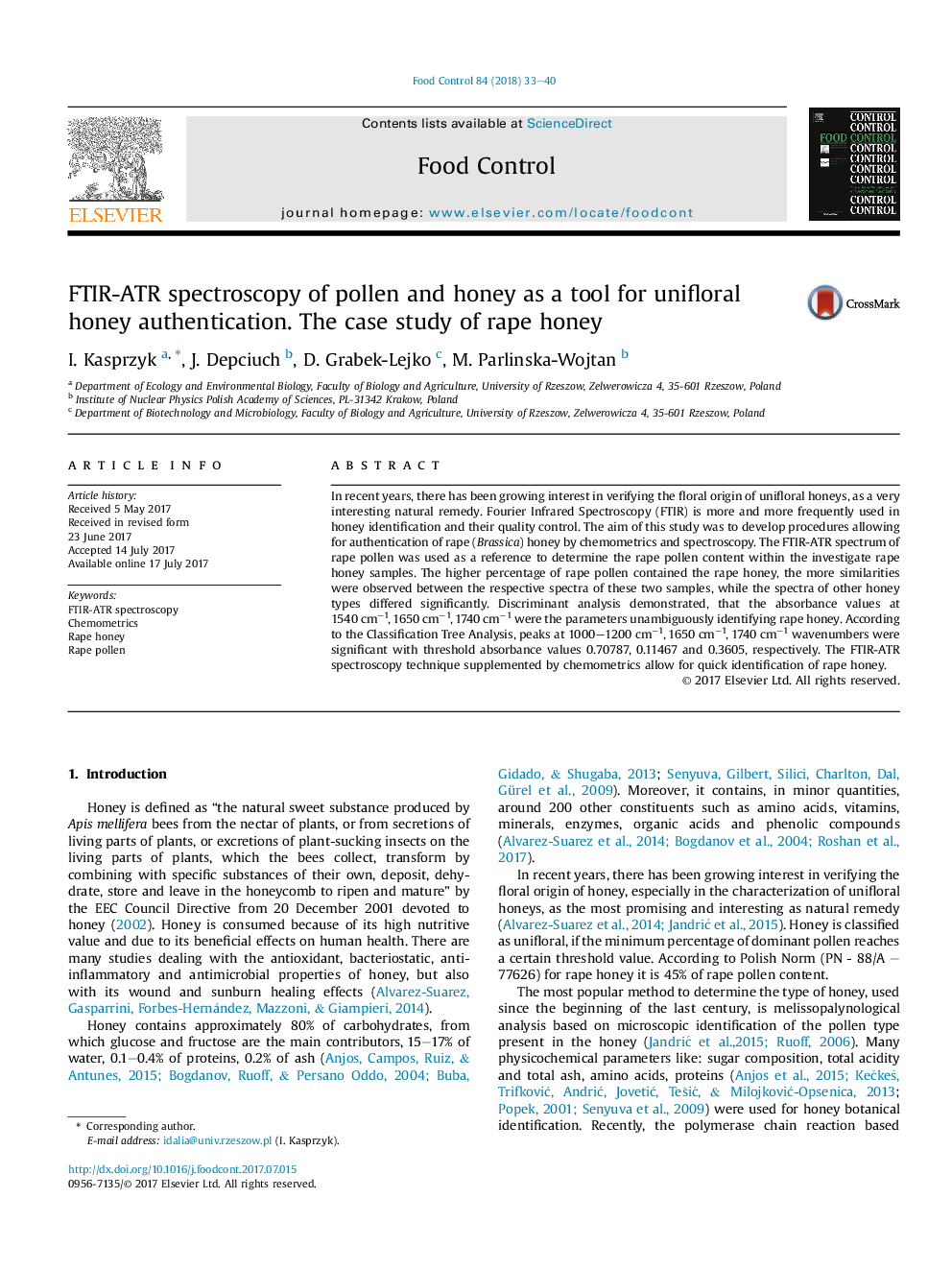| کد مقاله | کد نشریه | سال انتشار | مقاله انگلیسی | نسخه تمام متن |
|---|---|---|---|---|
| 5767297 | 1628380 | 2018 | 8 صفحه PDF | دانلود رایگان |

- The most of the honeys declared as rape contained from 68% to 96% of rape pollen.
- FTIR spectra of rape pollen and rape honeys were the most similar.
- Chemometrics procedure was developed allowing proper classification of rape honey.
- This procedure was satisfactory validated for other types of honey.
In recent years, there has been growing interest in verifying the floral origin of unifloral honeys, as a very interesting natural remedy. Fourier Infrared Spectroscopy (FTIR) is more and more frequently used in honey identification and their quality control. The aim of this study was to develop procedures allowing for authentication of rape (Brassica) honey by chemometrics and spectroscopy. The FTIR-ATR spectrum of rape pollen was used as a reference to determine the rape pollen content within the investigate rape honey samples. The higher percentage of rape pollen contained the rape honey, the more similarities were observed between the respective spectra of these two samples, while the spectra of other honey types differed significantly. Discriminant analysis demonstrated, that the absorbance values at 1540Â cmâ1, 1650Â cmâ1, 1740Â cmâ1 were the parameters unambiguously identifying rape honey. According to the Classification Tree Analysis, peaks at 1000-1200Â cmâ1, 1650Â cmâ1, 1740Â cmâ1 wavenumbers were significant with threshold absorbance values 0.70787, 0.11467 and 0.3605, respectively. The FTIR-ATR spectroscopy technique supplemented by chemometrics allow for quick identification of rape honey.
Journal: Food Control - Volume 84, February 2018, Pages 33-40